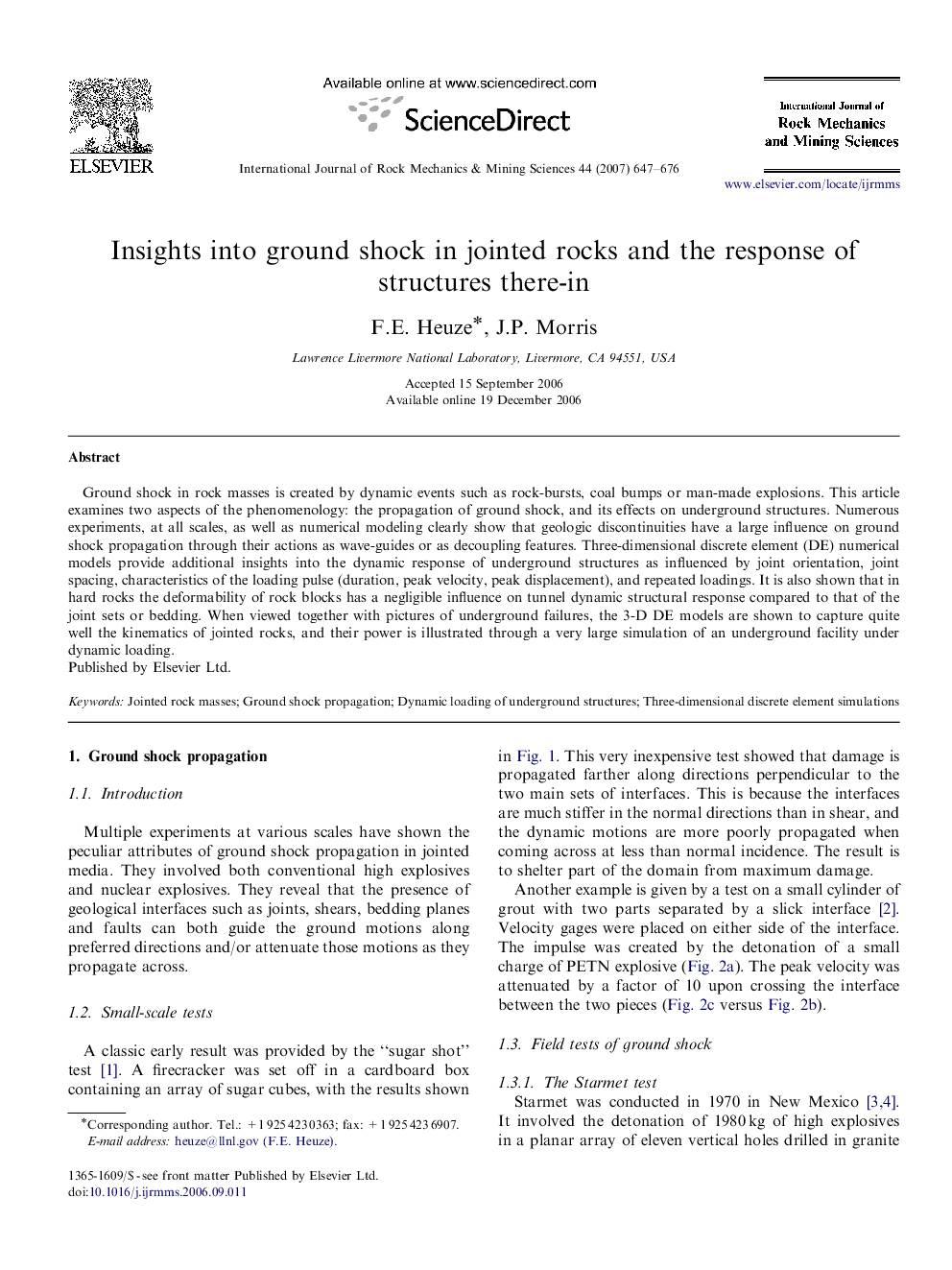| Article ID | Journal | Published Year | Pages | File Type |
|---|---|---|---|---|
| 810193 | International Journal of Rock Mechanics and Mining Sciences | 2007 | 30 Pages |
Ground shock in rock masses is created by dynamic events such as rock-bursts, coal bumps or man-made explosions. This article examines two aspects of the phenomenology: the propagation of ground shock, and its effects on underground structures. Numerous experiments, at all scales, as well as numerical modeling clearly show that geologic discontinuities have a large influence on ground shock propagation through their actions as wave-guides or as decoupling features. Three-dimensional discrete element (DE) numerical models provide additional insights into the dynamic response of underground structures as influenced by joint orientation, joint spacing, characteristics of the loading pulse (duration, peak velocity, peak displacement), and repeated loadings. It is also shown that in hard rocks the deformability of rock blocks has a negligible influence on tunnel dynamic structural response compared to that of the joint sets or bedding. When viewed together with pictures of underground failures, the 3-D DE models are shown to capture quite well the kinematics of jointed rocks, and their power is illustrated through a very large simulation of an underground facility under dynamic loading.
